
Little Grebe
"Both sexes of the Little Grebe are mainly dusky brown or blacking grey above, and silvery white below,…

Rhine River
The Rhine River begins in Switzerland and flows through Germany and the Netherlands before emptying…
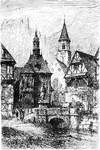
Black Forest Village
View of a village in the Schwartzwald, or Black Forest. The Black Forest stands in the elbow formed…

Town of Oberkirch
Oberkirch is a manufacturing town in Western Baden-Württemberg, Germany about 12 km North-East…
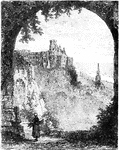
Heidelberg Castle Viewed from Terrace
View of the castle framed by an arch. A landmark of Heidelberg, the castle ruins are among the most…
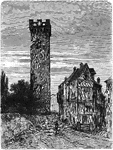
Tower of Goetz
Located in Heilbronn, a city in the north of Baden-Wirttemburg, Germany, is the tower of an old fortress…
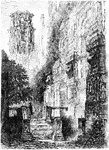
Entrance to Heidelberg Castle
A landmark of Heidelberg, the castle ruins are among the most important Renaissance structures north…
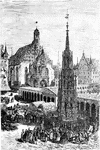
Nuremberg
A market place in Nuremberg. Nuremberg, a city of the Middle Ages, is filled with works of art of the…

City, Passau
Passau is one of the oldest cities in Germany, a village of Gauls in early days; and later, a Roman…

View of Lintz
A picturesque view of the Lintz (Linz) city center. Lintz was founded by the Romans, who called it "Lentia."…
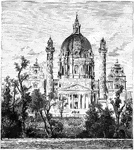
Church at St. Charles Borromeo, Vienna
The Karlskirche (German for St. Charles's Church) is a church situated on the south side of Karlsplatz,…

Storm Petrel Swimming with Reflection
The storm Petrel "of the Mediterranean and North Atlantic from Greenland to South Africa, which breeds…

Tropic Bird Sitting on a Ledge
The Tropic Bird " are chiefly found in the tropical regions of the south; ... this species breeds as…
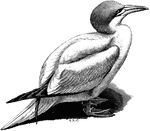
Gannet
"The Gannet (S. bassana) has slate-grey wing-quills, purplish-grey bill, reddish feet and naked parts."…

Cormorant
The Cormorant "P. carbo, but has a tuft of long narrow recurved plumes on each side f the crown in the…
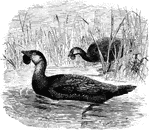
Two Musk Ducks Swimming between the Tall Grass in a Lake
Biziura lobata, (Musk Duck) of Tasmania and Australia -except the north-is brown with buff mottlings,…

Two Sparrow Hawk in a Large Flat Nest of Twigs with Five Young Sparrow-Hawk Beside a Tree Trunk
"Accipiter nisus, the Sparrow-Hawk, which breeds throughout Europe, North Africa, Asia north of the…

Red Grouse
"Lagopus scoticus, the Red Grouse or Muirfowl, the only bird entirely confined to our islands, differs…

Land-Rail
The Crex pratensis, Land-Rail, or Cork Crake, is mostly brown with the upper parts spotted, a blue-green…
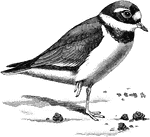
Ringed Plover
"Aegialitis hiaticola, the Ringed Plover, Sand-Lark, or Stone-runner, mistakenly called the "Ring-Dotterel"…
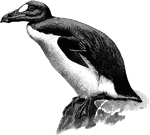
Great Auk
"This species (Alca impennis or Great Auk), extirpated chiefly by the persecution of fisherman, but…
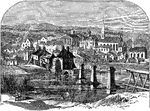
Fredericksburg, VA
Fredericksburg is an independent city in the Commonwealth of Virginia located 50 miles south of Washington,…
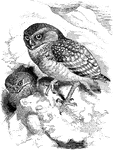
Two Burrowing Owls by the Mountains
"Speotyto cunicularia, the Burrowing Owl, a comparatively long-legged and short -winged bird with incomplete…
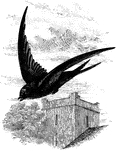
Common Swift Flying Through the Air by a Structure and a Tree with its Mouth Open
"The coloration of the twenty or more species of Cypselus is sooty-black or mouse-brown, frequently…
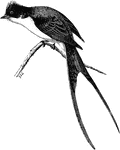
Scissor-tail
"Milvulus tyrannus, Scissor-tail, normally exhibits olive, grey, yellow, or white in varying proportions."…

Skylark
"Alauda arvensis, the Sky-Lark, breed in Britain. The normal coloration is light-brown with darker longitudinal…

Nuthatch
"The colours in Sitta caesia, (Nuthatch) which ranges over nearly all the Palaearctic and Indian Regions,…
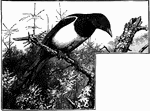
A Magpie Sitting on a Tree Branch Looking Down While Surrounded by Other Trees
"The Pica rustica, or Magpie, extends through the Palaearctic Region, and reaches Formosa and North…
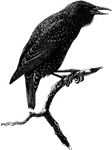
Common Starling
"Our familiar Starling (Sturnus vulgaris) being iridescent black, with buff markings above, and, after…
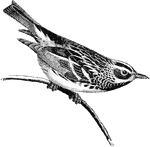
Black and White Warbler
"Mniotilta varia, the Black and White Warbler, The general coloration is olive-green, grey, or slaty-blue,…
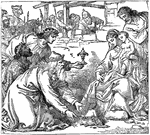
Wise Men of the East Presenting Their Gifts
"And when they were come into the house, they saw the young child with Mary his mother, and fell down,…
Floating Meadow Grass
Floating Meadow Grass (Glyceria fluitans), also know as Common Manna Grass, grows in very moist muddy…
Floating Meadow Grass
Floating Meadow Grass (Glyceria fluitans), also know as Common Manna Grass, grows in very moist muddy…
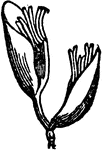
Meadow Soft Grass
Tufted or Meadow Soft grass are other oft used names and in North America it is known as Velvet Grass.
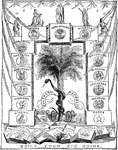
Southern Republic Built from the Ruins
A political cartoon of the Southern states being built from the ruins after the Civil War.

General Ambrose Everett Burnside
Ambrose Everett Burnside (1824 - 1881) was an American soldier, railroad executive, inventor, industrialist,…

Battle of New Bern
Landing at the Battle of New Bern, also known as the Battle of New Berne or Battle of Newbern which…

Battle of Antietam
Scene by rail-fence, Antietam after the Battle of Antietam, also known as the Battle of Sharpsburg.…

Battle of Antietam
The Battle of Antietam, also known as the Battle of Sharpsburg, was fought on September 17, 1862, near…
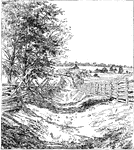
Sunken Road at Battle of Antietam
The Sunken Road at the Battle of Antietam. The Battle of Antietam, also known as the Battle of Sharpsburg,…
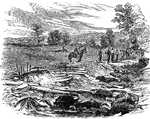
Sunken Road at Battle of Antietam
Scene at the Sunken Road at the Battle of Antietam. The Battle of Antietam, also known as the Battle…

Trenton High Falls
Trenton Falls, a geologist's playground, has been inspiring generations of scientists. Referred to as…
Sandstone
Along the south shore of Lake Superior is a sandstone once regarded as belonging to the Potsdam, but…
Garpikes Fish
The gars, or garpikes, are members of the Lepisosteiformes (or Semionotiformes), an ancient order of…
Garpikes Fish
The spotted Gar (Lepisosteus oculatus) is a primitive freshwater fish of the family Lepisosteidae, native…

Bad Lands of Dakota
In the Dakotah (Dakota) Territory, the area know as the Bad Lands, is a sunken area thirty miles wide…

Niagara River and Falls
Niagara, though often popularly translated as "Thundering Waters", this is a folk translation with no…

Metamorphosis of a Monarch Butterfly
A butterfly is an insect of the order Lepidoptera. Like all Lepidoptera, butterflies are notable for…
Metamorphosis of a Monarch Butterfly
A butterfly is an insect of the order Lepidoptera. Like all Lepidoptera, butterflies are notable for…

Puss Moth
The Puss Moth (Cerura vinula) is a lepidoptera from the family Notodontidae. The puss moth is stinging…
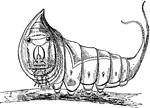
Puss Moth
The Puss Moth (Cerura vinula) is a lepidoptera from the family Notodontidae. The puss moth is stinging…

Browning Machine Gun
The Browning M1919 is a .30 caliber medium machine gun family widely used during the 20th century. It…
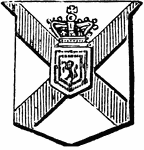
Knight and Baronet of Nova Scotia
"KNIGHT AND BARONET OF NOVA SCOTIA. A new creation during the reign of George I. to induce capitalists…
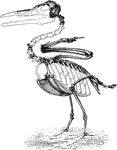
Restoration of Ichthyornis
"Ichthyornis, though the wings are well developed, with fused metacarpals, and the sternum is keeled,…
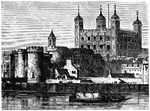
Tower of London
Her Majesty's Royal Palace and Fortress, more commonly known as the Tower of London (and historically…

American Goldfinch
The American Goldfinch (Carduelis tristis) is a North American bird in the Fringillidae family of finches.

Robin
"Robin: Upper parts slate-color, with a shade of olive. Head black, the eyelids and a spot before the…

Bird Skulls
"Fig. 114. -Skulls of Turdidae and Sylvicolidae, nat. size; after Shufeldt. A, Oroscoptes montanus;…

Wood Thrush
"Wood Thrush. Upper parts, including the surface of the closed wings, tawny-brown, purest and deepest…
